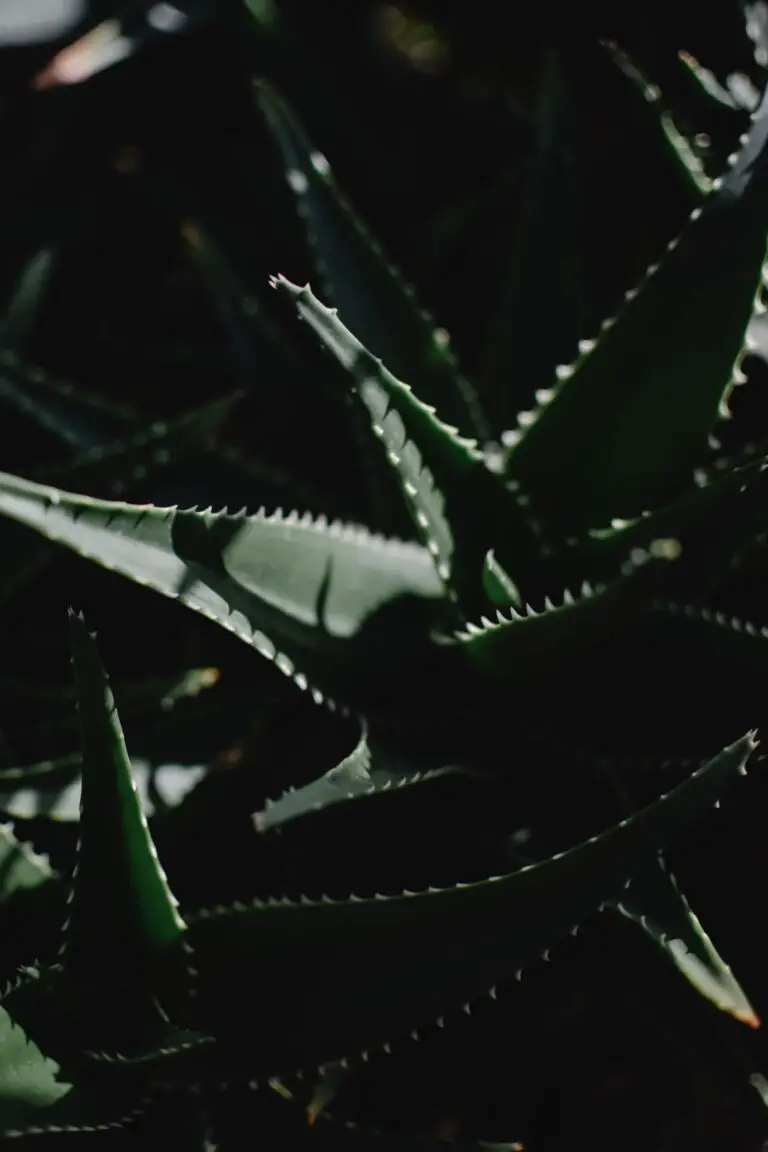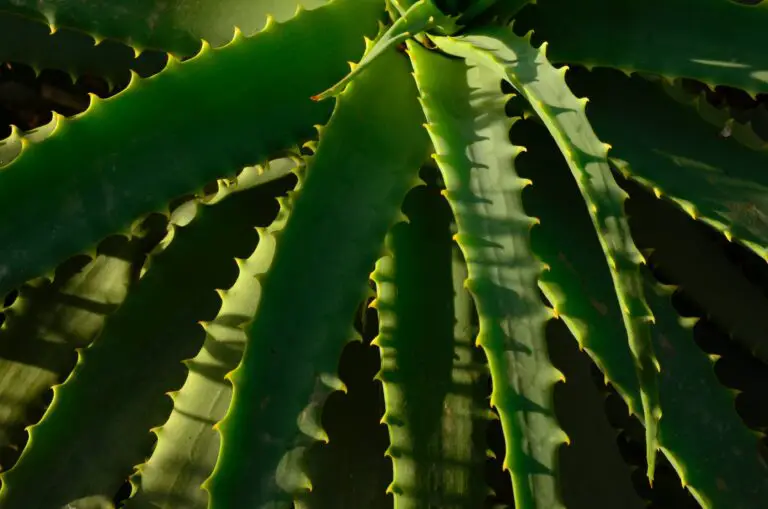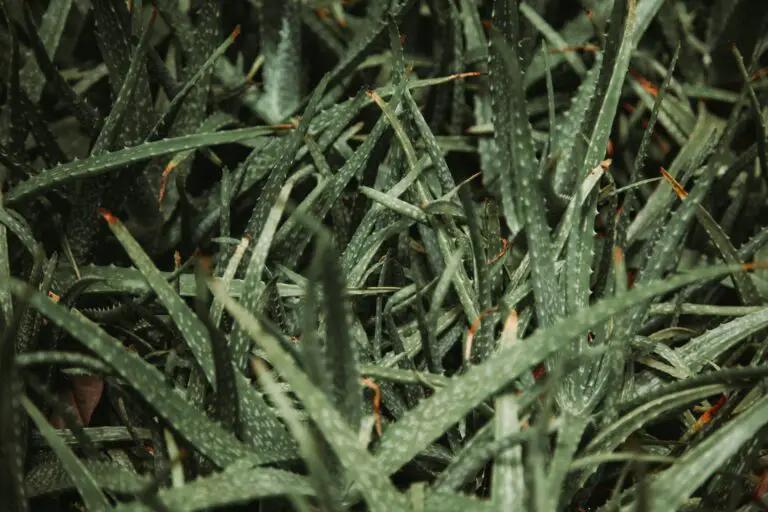Introduction to Aloe Vera
When you hear the name Aloe vera, what springs to mind? For some, it might be the spiky, yet strangely beautiful succulent plant that adds charm to your home decor while purifying the air. Others might picture soothing sunburn gels or rejuvenating skincare products. Aloe Vera, also known as Burn Plant, Elephant’s Gall, or Lily of the Desert, among others, boasts a rich history of use that dates back to ancient times.
It’s not just the plant’s aesthetic appeal that earned it a place in many households worldwide. Aloe Vera is known as nature’s pharmacy for a reason. It’s a powerhouse of nutrients and healing properties, packed with vitamins, minerals, and amino acids. From healing sunburns and cuts to improving digestion and skin health, its uses are innumerable.
With its origins tracing back to the Arabian Peninsula, Aloe Vera was introduced to various parts of the world due to its cultivation for agricultural and medicinal uses. From the early Egyptians and Greeks to the Chinese and the Indians, this therapeutic plant has found its place in the heart of many cultures and medical systems. In fact, did you know that ancient Egyptians referred to Aloe Vera as the ‘plant of immortality’ due to its diverse applications in health, beauty, and vitality?
Curious to know more about this astounding plant? Check out this video which delves into the world of Aloe Vera and all its potential benefits.
Today, Aloe Vera is cultivated in tropical climates worldwide. From lotions and gels to juices and capsules, Aloe Vera found its way into a wide range of over-the-counter products. And it’s not just the beauty industry that has harnessed the power of this miraculous plant, but the health, food, and beverage industries have also adopted Aloe Vera due to its myriad benefits.
According to the Cleveland Clinic, Aloe Vera juice, for instance, contains vitamin C, calcium, and magnesium and has been linked to aiding digestion, boosting immune function, and more.
With its vast range of uses, it’s no wonder that Aloe Vera continues to intrigue researchers, medical practitioners, and consumers worldwide. As we delve deeper into this article, we’ll take a closer look at the healing power of Aloe Vera and how you can harness its benefits in various aspects of your life. Stay tuned!
Biological Description of Aloe Vera
Let’s explore the fascinating world of Aloe Vera—a gem of nature, often called the ‘plant of immortality’ due to its myriad of healing properties. Picture this: a succulent plant that thrives in arid conditions, radiating with spiky green leaves filled with a clear gooey gel. This plant right here is the Aloe Vera, widely recognized and cherished for its therapeutic abilities.

Physically, Aloe Vera is distinctly characterized by its water-storing leaves. Each leaf is green—sometimes with a tinge of grey—and has a serrated edge with small white teeth. Don’t worry about the teeth, they may look sharp, but are quite harmless. The leaves are quite large, generally ranging anywhere between 1/2 to 2 feet long. But the real magic is inside these thick leaves—an environment oozing with a wet, slimy and clear aloe gel.
Ever wonder where these resolute plants prefer to live? Their ideal growth conditions are slightly sandy and well-drained soils, typically found in areas that have a hot and dry climate. However, you’d be surprised at the resilience of Aloe Vera! It manages to survive harsh climates and poor soil conditions, making it a testament to its hardy and swashbuckling nature. A good read detailing aloe’s gritty adaptability can be found here.
Where Is Aloe Vera Commonly Found?
The Aloe Vera plant has spread far and wide across the globe, but it is commonly believed to originate from the Arabian Peninsula. Being a robust, adaptable succulent, it thrives in tropical, semi-tropical, and arid climates around the world. Today, it grows wild in regions such as North Africa, Southern Europe, and the Canary Islands—displaying its unwavering tenacity and adaptability to spread.
The History of Aloe Vera
Delving into the history of Aloe Vera, you’d find a timeline that bridges continents and centuries, aptly earning it the moniker of Nature’s Pharmacy. The healing properties of this plant have been recognized and utilized by numerous ancient civilizations, weaving its green tendrils through the tapestry of human history.
For instance, imagine walking the hot, dusty roads of ancient Egypt. It’s the time of the Pharaohs, and Aloe Vera, referred to as the ‘Plant of Immortality’, is used prolifically in their society. From skin treatments for the royal class to embalming their revered dead, it had an indispensable role. In fact, legend has it that Queen Cleopatra herself incorporated Aloe Vera in her daily skincare regime.
Travelling further east, the plant finds its roots in traditional Chinese and Indian medicine. Known as ‘Lu Hui’ in China and ‘Kumari’ in India, Aloe Vera was prescribed for ailments ranging from digestive problems to skin conditions. Not just a cure, but a sign of beauty, prosperity, and well-being.

Through the centuries, Aloe Vera has continued to inspire, heal, and thrive. The Greek physician, Dioscorides, touted its use in treating issues like hair loss, stomach disorders, and even combat wounds. Fast-forward to the New World era, and you’ll find it being carted across the ocean by Spanish explorers to be planted, quite literally, in the sandy soils of the Caribbean and South America.
Today, it’s almost impossible to walk into any store and not find a product that uses Aloe Vera. It’s a testament to its enduring appeal that started thousands of years ago in ancient civilizations, and continues today, underpinning our understanding of natural, holistic health.
In conclusion, the history of Aloe Vera reminds us that sometimes, the best solutions can indeed be found in nature. A plant that began its humble journey in the arid climes of Africa has today touched every corner of the globe – a testament to the amazing versatility and resilience of Aloe Vera, the healing superstar of Nature’s Pharmacy.
Aloe Vera and its Healing Properties
When we think of nature’s vast pharmacy, Aloe Vera undoubtedly holds a prime position. Renowned for its soothing and healing properties, this humble plant is much more than just an ingredient in your skincare regimen. So, let’s deep-dive into the many ways Aloe Vera heals.
Imagine you are cooking, and suddenly, you experience the sharp sting of a minor burn. You quickly slather some Aloe Vera gel on it. Within moments, you feel an immediate release from the sting. That’s the power of Aloe Vera for you!
The healing properties of Aloe Vera are not only restricted to minor wounds and burns. It’s proven to be effective in treating more severe skin conditions, such as psoriasis and herpes simplex. Notably, the beneficial properties of Aloe Vera are attributed to its rich content of vitamins, enzymes, saponins, sugars, and other bioactive compounds.
The Science Behind Aloe Vera’s Healing Powers
Did you know that Aloe Vera boasts over 75 potentially active constituents, including vitamins, minerals, enzymes, sugar, lignin, saponins, and amino acids? These compounds have been studied extensively for their role in the healing process.
To showcase Aloe Vera’s healing potential, here’s a real-life example. Consider an instance of sunburn. In such a case, Aloe Vera acts as an analgesic to soothe the pain, and its anti-inflammatory properties reduce redness and swelling. Not only this, but its plentiful antioxidants also fight off damaging free radicals.
But the wonders of Aloe Vera extend far beyond skin ailments. Thanks to its laxative properties, Aloe Vera can provide natural relief for people dealing with constipation. Furthermore, some early research suggests that Aloe Vera might even play a role in managing diabetes, though further study is necessary to confirm these findings.
Maximizing the Benefits of Aloe Vera
Given Aloe Vera’s fantastic health benefits, it’s natural to want to maximize its usage. However, it’s essential to remember that while Aloe Vera is a fantastic natural remedy, it’s not a cure-all. Always consult your healthcare provider before starting any new health regimen, even if it’s with the seemingly harmless Aloe Vera!
Check out this video on Aloe Vera and its healing properties:
Scientific Studies on Aloe Vera
Have you ever wondered about the science behind the magic of the Aloe Vera plant? Well, hold on to your hats as we plunge into the captivating results that scientific studies on Aloe Vera have unearthed!
Countless studies have endeavored to delve into the mysteries of Aloe Vera, and time after time, the conclusions have been staggering. This fantastic plant is even more impressive than we thought! 
The Research Process
How are these studies conducted, you may ask? Imagine a bustling lab, white coats fluttering and faces intense with concentration. Rows of Aloe Vera plants under observation, their succulent leaves holding a treasure of wellness benefits.
Now, we move to the testing phase. The extracted aloe juice is now applied in various scenarios – some scientists test it on skin cells in a petri dish, others observe its effects on mice, and so on.
Findings that Stunned the World
Now, let’s look at the results from such trials. For instance, one study published in the ‘Journal of Environmental Science and Health’ stated that Aloe Vera contains several antioxidant compounds. These help combat free radicals, the pesky little molecules leading to premature aging and cell damage.
In another study, published in ‘Phytomedicine’, it was found that Aloe Vera has potent anti-inflammatory properties. This means it can help soothe conditions like sunburn and skin irritation, thereby justifying why your grandmother keeps telling you to apply aloe gel on a rash.
Unraveling the results of these studies is akin to lifting the veil off nature’s secret weapons, arming us better for the battles we wage daily against disease and deterioration.
We hope this section has helped you appreciate the rigorous, detailed process of scientific studies, emphasizing the authenticity and effectiveness of Aloe Vera. Isn’t science fascinating when it starts to echo the wisdom of the ages?
Skin Care Benefits of Aloe Vera
Imagine a versatile, all-natural product that can make your skin look stunningly radiant and feel incredibly smooth. Sounds like a dream, right? Luckily for us, nature has blessed us with aloe vera, a potent botanical known for its astonishing skin care benefits.
Aloe vera, with its signature gel-like interior, is a heavyweight in the field of natural skincare due to its skin-loving nutrients like vitamins A, B, C, D and E, and minerals such as magnesium, potassium and zinc. Primarily, aloe vera acts as a moisturizing agent, leaving your skin rejuvenated and revitalized.
Hydrating Power of Aloe Vera
Due to its high water content, aloe vera has a great reputation for its hydrating capabilities. Applying a cream, gel, or lotion enriched with aloe vera provides a protective layer on your skin, which helps retain more moisture. Take, for instance, your skin post-sun exposure. Instead of dealing with the red, inflamed skin, applying aloe vera can cool down the skin and speed up the healing process. The transformation is as satisfying as watching a parched plant restored to life after a good watering!
Anti-aging and Wrinkle Reduction
With aging comes wrinkles and fine lines, a common skin concern for most of us. Enter Aloe Vera, your skin’s knight in shining armor! Aloe Vera stimulates the production of collagen, the protein responsible for keeping our skin firm and youthful. With continuous use, aloe vera can significantly reduce wrinkles, making you look ageless and fresh. Now, who wouldn’t want to unlock this natural fountain of youth?
Acne and Blemish Treatment
If breakouts and acne scars often ruin your day, aloe vera could just become your best friend. Thanks to its anti-inflammatory properties, aloe vera helps alleviate acne and reduces redness. Plus, its antimicrobial properties can prevent bacteria from causing breakouts in the first place. Just a dab of aloe vera gel on the affected areas, and voila- start saying goodbye to those pesky pimples!
As with any natural remedy, results from using aloe vera can vary from person to person. It’s always advisable to do a patch test before applying any new product to your skin, even if it’s a natural one like aloe vera. Staying informed about possible side effects can ensure a happy and healthy relationship with this miraculous plant.
The best part about aloe vera? It’s not just a fad. Its benefits have the backing of ancient knowledge and modern science alike, which gives us all the more reason to embrace aloe vera in our skincare routine. Integrate aloe vera into your regimen and let the transformation unfold!
Curious to learn more about how aloe vera can benefit your skin? Check out this video for more insights.
Health and Dietary Benefits of Aloe Vera

Aloe Vera, often referred to as nature’s pharmacy, offers a surplus of health and dietary benefits that are too good to ignore. Apart from its healing and therapeutic features inherently known since ancient times, it’s an extraordinary addition to our diet too.
Rich Nutritional Profile
Let’s break down this incredible plant – Aloe Vera. A small cup of Aloe Vera juice is loaded with vitamins A, C, and E. These are powerful antioxidants that help to neutralize free radicals in our body. It also includes Vitamin B12, folic acid, and choline. If you thought the list was over, hold on! Aloe Vera also encapsulates minerals like calcium, copper, selenium, chromium, manganese, magnesium, potassium, sodium and zinc. Can you believe the nutritional punch this green, spiked leaf is packing?
Improves Digestion
Here’s a real-life example for you – Meet John. He had suffered from persistent digestive issues, and most meals saw him clutching his stomach in pain. Tired of antacids and painkillers, someone suggested Aloe Vera juice, and voila! His digestive discomfort dramatically decreased. Aloe Vera has natural fiber that aids digestion and improves bowel movement. Talk about a gut-loving plant!
Potent Detoxifier
Here’s another interesting fact about Aloe Vera; it’s a gelatinous plant food, just like seaweeds and chia seeds. The main benefit of these foods is that when they travel through the intestines, they absorb toxins along the way and get eliminated through the colon. This way, Aloe Vera juice helps in the detoxification process, keeping your system clean.
A Boost to Your Immune System
What’s the secret behind a robust immune system? Many factors play into it, but one stand-out feature is nutrient-rich food. And where do we find a powerhouse of nutrients? In Aloe Vera, of course! Imagine Laura, a software developer working long hours. Her immunity was always weak, catching flu here, a cold there. She starts incorporating aloe vera juice in her daily routine, and a few months down the line, finds she hasn’t had to suffer as many sniffles and sneezes as before. A real-life example to how Aloe Vera may enhance your immune response.
Aloe Vera – Your Skin’s Best Friend
Lastly, let’s talk about the skincare benefits of Aloe Vera. It’s a hydrating plant because of its high water content, which is excellent for your skin. Applying aloe topically can aid in hydration and soothe skin. Furthermore, because it carries Vitamin C and E, it can keep your skin looking fresh and vibrant.
In essence, incorporating Aloe Vera into your diet is an unlock to a healthier lifestyle. Its benefits are broad and holistic, covering your nutritional requirements, providing a better digestion experience, supporting a strong immune system, and granting you glowing skin.
How to Grow Aloe Vera at Home
Aloe Vera, frequently referred to as Nature’s Pharmacy, not only has myriad healing virtues but also is super easy, fun, and rewarding to grow at home in a pot. Whether you live in a tiny apartment or a large residence, it’s simple to create an ideal environment for this medicinal powerhouse.
Find the Perfect Pot and Placement
Start your Aloe Vera journey by selecting a pot with effective drainage to avoid water stagnation. It could be a fancy ceramic pot or even a simple terracotta one. Next, all your Aloe Vera plant needs is a sunny spot. Just like us, these plants love basking in sunlight.
Planting the Aloe Vera
Once you’ve got the pot and the placement all sorted, the next step is the actual planting. Here’s where the magic happens. Fill your pot with a fast-draining soil mix, make a small hole in the center, gently place your Aloe Vera in, and cover the roots with more soil. Remember the phrase ‘firm but gentle’ while doing this.
Watering and Maintenance
When it comes to watering your Aloe Vera plant, remember that less is more. Aloe Vera plants are essentially desert dwellers, and they can’t stand too much water. Hence, it’s essential to let the soil dry out between watering. Every once in a while, feed your plant with a diluted low-phosphorus fertilizer, and your Aloe Vera will thrive.
For a thorough visual understanding of these steps, check out this enlightening video on how to get started with growing Aloe Vera at home:
Harvesting and Using the Aloe Vera
Once your Aloe Vera plant starts growing, you will see the magic happen. You can start harvesting the Aloe Vera leaves as and when you need them for your skincare or health needs. Just make sure to cut close to the base and always from the outside as these are the oldest and most potent leaves.
At the end of the day, what’s better than having your very own home-grown Aloe Vera plant at your disposal? It’s not just about the convenience, it’s about becoming a part of the amazing cycle of nature. So why wait? Let’s get our hands dirty and start growing!
FAQs
When it comes to Aloe Vera, there are a number of frequently asked questions which we’ll cover here. Knowledge is power, and we want to make sure you’re fully briefed on this remarkable plant.
Can Aloe Vera be consumed internally?
Yes, Aloe Vera can be consumed internally in the form of juice or supplements. Its high nutrient and antioxidant content have been linked to various health benefits including improved digestive health. Remember, it’s always a good idea to consult with a healthcare provider before starting any new health regimen.
Are there side effects to Aloe Vera use?
While Aloe Vera is generally considered safe, some people may experience side effects such as a rash or an allergic reaction. Therefore, it’s recommended to conduct a patch test and introduce Aloe Vera into your routine gradually.
Can Aloe Vera cure severe diseases?
While Aloe Vera has numerous health benefits, it’s important to note that it should not be considered a cure-all for severe diseases. It can be a helpful natural remedy and supplement to traditional treatments, but should not replace professional medical advice and treatments. Speak with a healthcare professional if you’re considering using Aloe Vera as part of a treatment plan for severe conditions.
How to best use Aloe Vera for skincare?
For skincare, Aloe Vera gel can be applied directly to the skin or used as an ingredient in DIY skin-care recipes. Its soothing and hydrating properties make it a popular choice for moisturizing and calming irritated skin. However, what works best might differ from individual to individual, so experiment to find what works best for you and your skin type.
How to grow and care for Aloe Vera?
If you’ve ever thought about growing your own Aloe Vera plant, you’re in luck – it’s fairly simple. Aloe Vera plants prefer bright, indirect sunlight and require proper drainage, as their roots can rot in overly moist soil. They should be watered deeply, but not frequently. To avoid overwatering, allow the soil to dry at least 1 to 2 inches deep between waterings. And, of course, don’t forget to watch the video for more tips on Aloe Vera care.
What are the known nutrients found in Aloe Vera?
Aloe Vera is packed with antioxidants, enzymes, Vitamins A and C, and it is highly anti-inflammatory. It also contains folic acid and small amounts of minerals such as calcium, copper, chromium, sodium, selenium, magnesium, potassium, and zinc. This potent plant truly is a powerhouse of nutrients!